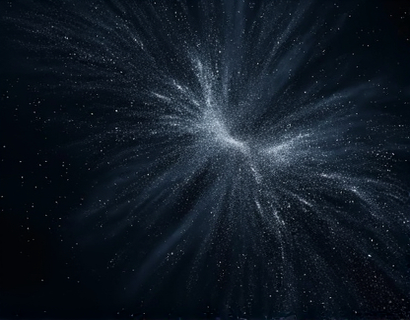Unlocking the Universe: In-Depth Insights for Curious Minds
The cosmos, an endless expanse of mystery and wonder, has captivated human imagination for centuries. From the earliest stargazers to modern astrophysicists, the quest to understand the universe drives curiosity and innovation. This comprehensive guide aims to embark on an enlightening journey through the cosmos, providing in-depth insights into various aspects of cosmic knowledge. Designed for curious minds, this collection of articles and current insights covers a wide array of topics, from the fundamental building blocks of the universe to the latest discoveries in astronomy and beyond. Join a community of like-minded individuals and expand your horizons, fostering a passion for learning and discovery.
Fundamentals of the Universe
The journey begins with understanding the fundamental components that make up the universe. At the core are elements such as matter and energy, which interact in complex ways to form the structures we observe. Matter, the physical substance that constitutes stars, planets, and everything tangible, is composed of atoms. These atoms are made up of protons, neutrons, and electrons, the building blocks of matter. Energy, on the other hand, is the force that drives the universe, manifesting in various forms such as light, heat, and kinetic energy.
The universe itself is vast and dynamic, expanding continuously since the Big Bang, the event that marked its inception approximately 13.8 billion years ago. This expansion is not uniform; it accelerates over time, a phenomenon attributed to dark energy, an mysterious form of energy that permeates all of space. Understanding the Big Bang and the subsequent evolution of the universe involves delving into cosmology, the study of the origin, structure, and fate of the universe.
Galaxies and Cosmic Structures
Galaxies are massive systems composed of stars, gas, dust, and dark matter, bound together by gravity. Our own galaxy, the Milky Way, is just one of billions in the observable universe. Each galaxy can contain hundreds of billions of stars, and these stars often form clusters or groups. The study of galaxies provides insights into the large-scale structure of the universe and the processes that govern the formation and evolution of cosmic structures.
Beyond galaxies lie even larger structures, such as galaxy clusters and superclusters, which are interconnected by vast filaments of dark matter and gas. These structures form a cosmic web, a complex network that spans the universe. Understanding these structures helps scientists unravel the mysteries of dark matter and dark energy, two of the most intriguing and least understood components of the cosmos.
Stars and Their Life Cycles
Stars are the luminous bodies that light up the night sky, each a massive nuclear reactor powered by the fusion of hydrogen into helium. The life cycle of a star is a fascinating journey that begins in stellar nurseries, clouds of gas and dust where gravity causes the material to collapse and form protostars. As these protostars accumulate mass, they heat up and eventually ignite, entering the main sequence phase of their life.
During this phase, which can last billions of years, stars maintain a stable balance between the inward pull of gravity and the outward pressure from nuclear fusion. The end of a star's life depends on its mass. Low-mass stars like the Sun will eventually shed their outer layers, forming planetary nebulae, and leave behind a dense core known as a white dwarf. More massive stars have a more dramatic fate, ending in supernova explosions that can outshine entire galaxies and leave behind neutron stars or black holes.
Planetary Systems and the Search for Life
Planets form within the protoplanetary disks that surround young stars. These disks consist of gas and dust that gradually coalesce into solid bodies through a process called accretion. Over time, these bodies grow larger, eventually forming planets. The diversity of planetary systems discovered in recent years has expanded our understanding of planet formation and the potential for life elsewhere in the universe.
The search for extraterrestrial life is a captivating area of research, driven by the discovery of exoplanets, particularly those located in the habitable zones of their stars, where conditions might be right for liquid water to exist. The presence of water is a key factor in the potential for life, as it is essential for the biochemical processes known to support life on Earth. Missions like the Kepler Space Telescope and the upcoming James Webb Space Telescope are pivotal in this quest, providing detailed observations of distant worlds.
Black Holes and Gravitational Waves
Black holes are among the most enigmatic objects in the universe, regions of space where gravity is so strong that nothing, not even light, can escape. They form from the remnants of massive stars after a supernova explosion or can be found at the centers of galaxies, where supermassive black holes exert a significant influence on the surrounding environment.
Recent advancements in gravitational wave astronomy have opened a new window into the universe, allowing scientists to detect ripples in spacetime caused by the acceleration of massive objects. These gravitational waves, first predicted by Albert Einstein's theory of general relativity, provide direct evidence of black hole mergers and other violent cosmic events. The detection of gravitational waves has revolutionized our understanding of the universe, offering insights into the most extreme conditions and phenomena.
Cosmic Phenomena: Supernovae and Gamma-Ray Bursts
Supernovae and gamma-ray bursts are some of the most energetic events in the universe, releasing more energy in a few moments than the Sun will emit over its entire lifetime. Supernovae occur at the end of a star's life, marking the eExpansive death of massive stars or the detonation of white dwarfs in binary systems. These events not only shape the chemical composition of galaxies but also serve as cosmic lighthouses, helping astronomers measure distances across the universe.
Gamma-ray bursts, on the other hand, are brief but intense flashes of gamma rays, the most energetic form of electromagnetic radiation. These bursts are associated with the collapse of massive stars or the merger of neutron stars, and they can be detected from across the observable universe. Studying these phenomena provides insights into the most extreme processes in the cosmos and the fundamental laws of physics.
The Role of Telescopes and Observatories
Advancements in telescope technology have been crucial in expanding our cosmic knowledge. From ground-based observatories to space-based telescopes, each plays a vital role in observing the universe across different wavelengths. Ground-based telescopes, such as the Atacama Large Millimeter/submillimeter Array (ALMA) and the Very Large Telescope (VLT), offer high-resolution images and spectra of celestial objects. Space-based telescopes like the Hubble Space Telescope and the upcoming James Webb Space Telescope provide unparalleled views of the universe, free from atmospheric interference.
These observatories have enabled groundbreaking discoveries, from the detection of exoplanets to the mapping of the cosmic microwave background radiation, the afterglow of the Big Bang. The data collected by these instruments continue to fuel research and inspire new generations of scientists and astronomers.
Astrophysics and Theoretical Models
Astrophysics, the application of physics to understand the behavior of celestial objects and phenomena, is essential for interpreting observational data. Theoretical models, such as the standard model of cosmology and theories of dark matter and dark energy, provide frameworks for understanding the universe's structure and evolution. These models are continually refined as new data becomes available, leading to a deeper and more accurate understanding of cosmic processes.
One of the most significant theoretical achievements is the development of the ΛCDM model, which incorporates dark energy (Λ) and cold dark matter (CDM) to explain the observed expansion of the universe and the formation of large-scale structures. This model, while highly successful, still faces challenges, particularly in explaining the nature of dark matter and dark energy. Ongoing research aims to address these mysteries and develop more comprehensive theories.
Future Prospects and Challenges
The future of cosmic exploration is filled with exciting prospects and significant challenges. Upcoming missions, such as the Euclid satellite and the Nancy Grace Roman Space Telescope, aim to map the dark universe in unprecedented detail, providing insights into the nature of dark matter and dark energy. These missions, along with ground-based projects like the Square Kilometre Array (SKA), will push the boundaries of our knowledge and technology.
However, the quest to understand the universe is not without challenges. The vast distances involved, the limitations of current technology, and the complexity of cosmic phenomena all pose significant hurdles. Collaboration among international scientific communities and the development of new technologies will be crucial in overcoming these challenges and advancing our cosmic knowledge.
Conclusion
Embarking on an journey through the cosmos is a profound and rewarding experience, offering insights into the fundamental nature of reality and our place within it. From the smallest particles to the largest structures, the universe presents a tapestry of wonders waiting to be explored. By continuing to ask questions, seek answers, and push the boundaries of our understanding, we not only expand our knowledge but also inspire future generations to carry on this timeless quest for cosmic knowledge.










































